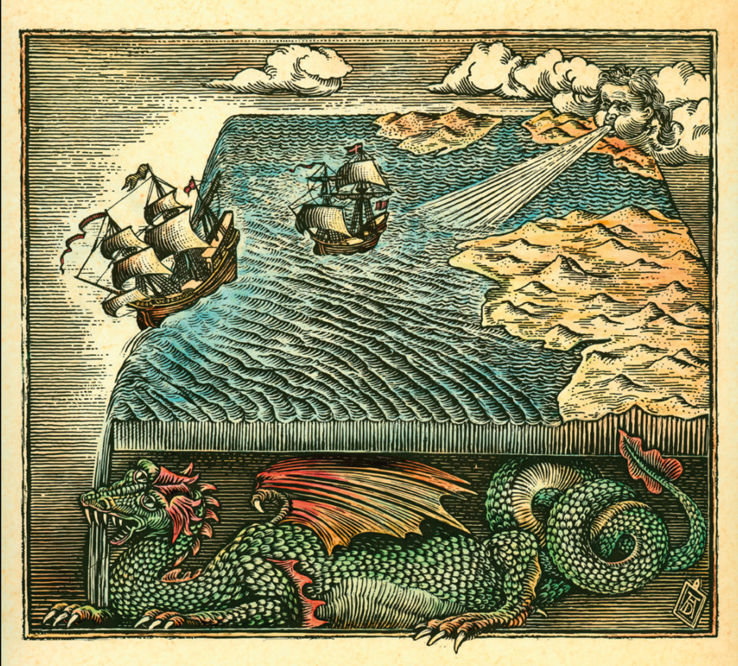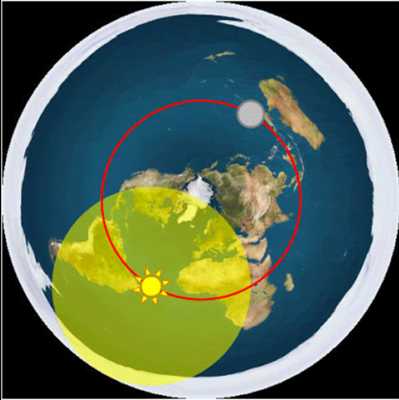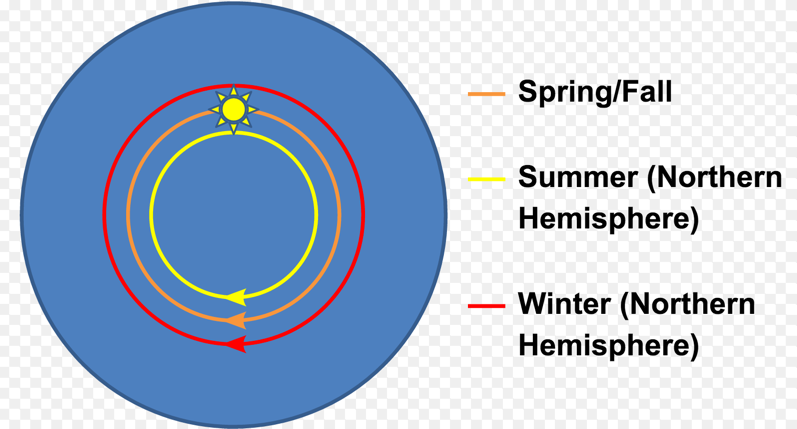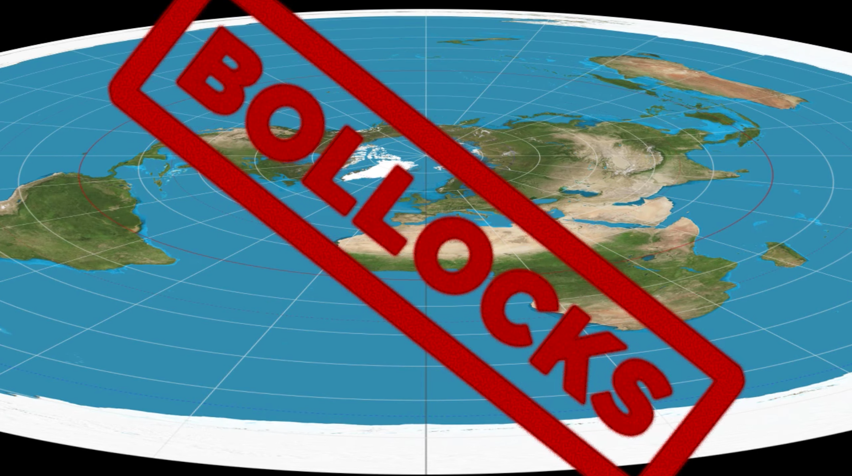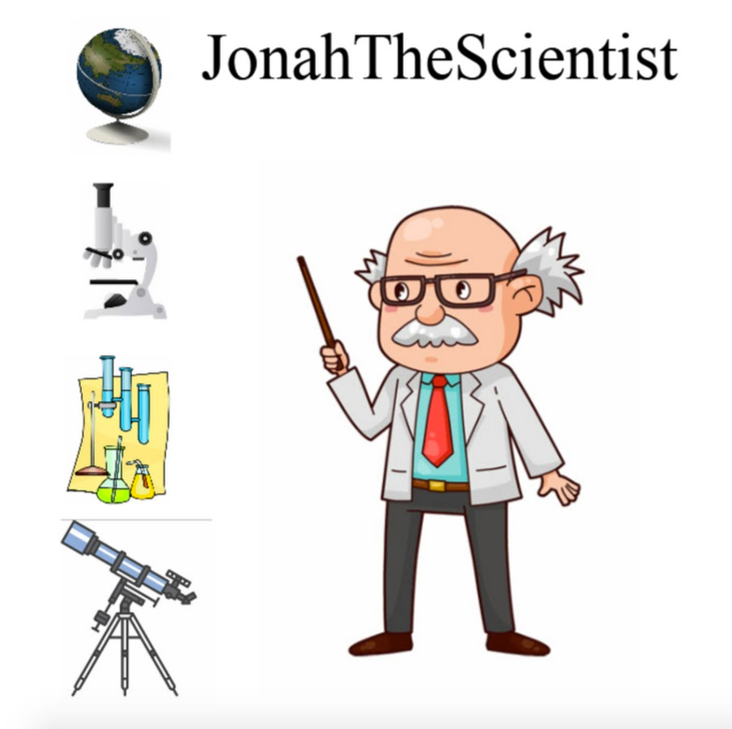Zeteticism DotCom (Jeffrey Grupp) - Centrifugal force of carousel vs Earth's equator, relevant to the FLAT EARTH VS ROUND EARTH
Dear Zeteticism DotCom (Jeffrey Grupp),
Fact check = You Fail
Your mathematics for calculating centrifugal force for both the carousel and a 50 lbs person at the equator are correct.
However, your video ending conclusion is wrong.
See the sequence of 4 pictures below.
Simply put, as a human being we feel only acceleration, not the effect of a constant force.
Case in point:
While accelerating (gas pedal down and traveling faster and faster) in your car, you feel a constant push back into your seat.
While decelerating (foot on the brake and traveling slower and slower in your car), you feel a constant push forward into the windshield out of your seat.
But when the car is traveling at a constant speed, say 50mph, you are neither pushed backward into your seat or pushed forward into the windshield. You simply remain at rest and do not feel any force on your body.
In fact, you can keep a cup of coffee or other opened drink in the car, and the liquid will not move or spill.
Conclusion: we feel acceleration, but not a constant force.
That is where you failed.
- - - - - - -...
Your analysis is the type of error made by those who have no understanding of physics.
Centrifugal Force at the Earth’s Surface
Posted by Justin A. Parr on September 11, 2014
Posted in: Math and Science. Leave a Comment
Centrifugal Force at the Earth’s Surface, in the United States
Why doesn’t Earth’s rotation fling us off in to space?
Quick recap:
Gravity attracts all objects toward the Earth’s center. The acceleration due to gravity at Earth’s surface is 9.8 meters per second, per second.
Centripetal force on Earth is the force of gravity acting on objects (us) orbiting Earth – we happen to orbit the Earth on its surface, at its exact speed of rotation, because gravity “glues” us to the surface as the Earth spins on its rotational axis.
Centrifugal force is the unbalanced reaction of inertia to centripetal force.
So centripetal force constantly “pulls” us toward the Earth as we orbit, while “centrifugal” force is the inertial tendency of mass (our bodies) to continue moving in a straight line (e.g. flung in to space).
The pound (lb), in normal reference, is a unit of weight (force). The kilogram is a unit of mass.
Force = Mass * Acceleration (F=ma)
The math:
Earth’s circumference at the equator is about 40,075 km. At the equator, Earth’s surface moves at about v=464 m/s (1,044 mph).
The Earth’s rate of rotation (w) is about 15 degrees per hour (.0042 deg/s), which of course equals one full rotation per day.
Earth’s average radius (r=center to surface) is about 6,370 km.
Centripetal acceleration at the equator, a = v^2/r, is about .034 m/s/s.
The latitude, measured in degrees, of a given location starts at 0 at the equator, and ends at 90 degrees at the north or south pole. Drawing a line from the center of the Earth, this would be the angle at which the line is deflected from its nearest point on the equator.
In the United States, the mean latitude is about 39 degrees, ranging from about 29.76 degrees in Houston, TX to about 48.23 degrees in Minot, ND.
As you move north, the distance of the surface from its axis of rotation decreases. At the mean US latitude, the radius from the surface to the axis of rotation is only about 4,951 km
At 39 degrees north latitude, the Earth’s linear velocity (at the surface) is about 360 m/s (811 mph)
The resulting centripetal acceleration (a=v^2/r) is .026 m/s/s
F=ma, so 1 kg mass (2.2 lb at Earth’s surface) * .026 m/s/s results in a centripetal force of .026 Newtons (N), or about .006 lb (about .096 oz or about 1/100 of 1 oz)
Since centrifugal force is the unbalanced reaction, the magnitude is the same, acting in the opposite direction (e.g. flinging us out toward space)
We can therefore use the formula above to calculate the centrifugal force for any arbitrary mass located in the US (at sea level, based on the mean latitude)
The calculation:
Convert to kilograms: weight in lb (at the Earth’s surface) / 2.2 = mass in kg
Multiply mass in kg by centripetal acceleration, .026 m/s/s = centripetal force in Newtons (N)
Convert Newtons (N) to lb: force in N / 4.45 = force in lb.
Simplified, this equates to:
cf = (( lb / 2.2 ) * .026 ) /4.45
cf = ( lb * .012 ) / 4.45
cf = lb * .0027
So any weight in lb (at Earth’s surface) times .0027 equals the centripetal (centrifugal * -1) force, on the Earth’s surface, at US mean latitude.
Some benchmark calculations:
100 lb of mass = 0.27 lb of centrifugal force
150 lb of mass = 0.40 lb of centrifugal force
200 lb of mass = 0.54 lb of centrifugal force
374 lb of mass = almost exactly 1 lb of centrifugal force.
As you can see, the inertial force acting on us, reacting to centripetal force, is a small fraction of the force of gravity on us. Thus, we don’t “fling off” in to space.
Reference:
(http://justinparrtech.com/JustinParr-Tech/centrifugal-force-at-the-earths-surface/)
**..
For your 50 lbs boy at the equator..
F=ma, so 22.68 kg mass (50 lb at Earth’s surface) * .026 m/s/s results in a centripetal force of 0.59 Newtons (N), or about .137 lb (about 2.192 oz)
Kara and Jami took a ride on the Bear Mountain Carousel. Jami selected a horse on the outside row, where Kara chose to sit in the row closest to the center of the carousel.
The rows are 17.6 feet and 12.4 feet respectively.
The angular speed of the carousel is 4.3 revolutions per minute.
mass of the earth = 5.972 x 10 to 24 kg
Carousel circumference = 2 * π * r = 2 * 3.14159265 * 17.6 feet
= 110.5841 feet
then .. per minutes it travels 4.3 * 110.5841 = 475.511 feet
or per second = 7.925 feet per second
F = m(v*v)/r
F = 50 lbs (7.9 ft/sec * 7.9 ft/sec) / 17.6 ft
F = 50 (62.41)/17.6
F = 3120.5 / 17.6
F = 177.3 lbs ft / sec*sec yours is correct
for the Earth
F = m(v*v)/r
F = 50 lbs (1,000 mi/hr * 1,000 mi/hr ) / 20,900,000 feet radius of Earth
1 mile per hour = 1.4667 foot per second
1000 miles per hour = 1466.7 foot per second
F = 50 lbs (2151208.89 ft / sec*sec) / 20,900,000
F = 5.146 lbs ft / sec*sec yours is correct
You are correct in that carousel’s F 35 time greater that Earth
at the equator
- - - - - - - - - -

- - -

- - -

- - -

- - - - - - - - - -
Discussion at - https://www.youtube.com/channel/UC7ipUKERU0tzYFxALJBli4A/discussion
Video at - (https://www.youtube.com/watch?v=ly-vsL6JsBI)
Our home page all articles - http://flatearthlunacy.com/
kind regards, JonahTheScientist
- - - - - - - - - - - - - - -


